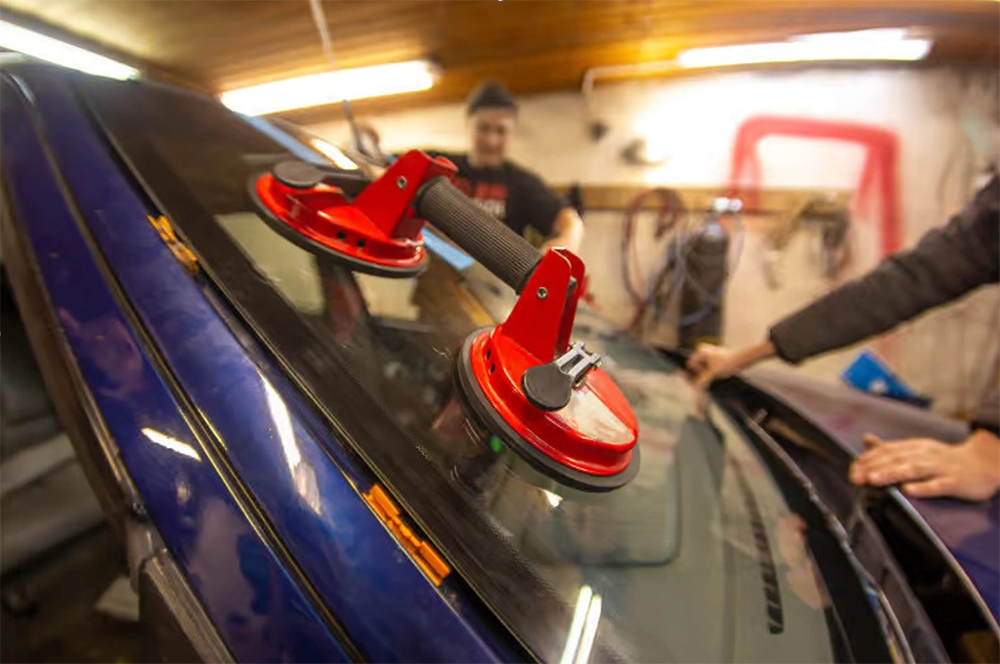 Motortopia Staff
.
May 28, 2024
.
Industry Updates
Motortopia Staff
.
May 28, 2024
.
Industry Updates

If your vehicle is from the 2010s and beyond, chances are, your windshield may be equipped with some modern features, including integrated cameras and sensors.
This is particularly common in the latest models boasting advanced driver assistance systems (ADAS), where these components play a pivotal role in enhancing your driving safety and convenience.
During windshield replacement, all components of the advanced driver assistance systems (ADAS), including cameras and sensors, undergo detachment and reattachment.
Since ADAS relies heavily on sensors and cameras installed in a vehicle’s windscreen, windshield calibration is essential to maintain the accuracy and reliability of these systems.
A minor alteration in the camera angle, even by just one degree, can substantially alter its viewing range, consequently impacting the performance of the vehicle’s ADAS features.
This process ensures that the sensors and cameras are perfectly aligned with the vehicle’s driving dynamics, which is crucial for the effective functioning of features like automatic emergency braking and lane-keeping assist.
If your vehicle is equipped with ADAS, then a windshield calibration is absolutely necessary following a windshield replacement or any significant repair that affects the windshield area.
Calibration ensures that these inputs are precise, which is crucial for the effectiveness of safety features such as automatic emergency braking, lane departure warnings, and adaptive cruise control. Neglecting this step can lead to malfunctioning ADAS, compromising both safety and vehicle performance.
There are two main types of windshield calibration: static and dynamic. The type of windshield calibration you need depends on the type of vehicle you have. It’s best to consult Auto glass technicians to get a professional assessment and accurate calibration. They can provide insights into the latest technology and methods for ensuring your vehicle’s systems are optimally tuned and safe to use.
Dynamic calibration, also known as on-road calibration, requires driving the vehicle at a specific speed along clearly marked roads to adjust the ADAS sensors and cameras. During this process, the vehicle’s systems gather real-time data, which is used to fine-tune the sensors.
This technique is frequently combined with static calibration or used for systems that need environmental feedback for complete sensor alignment.
A static calibration, also commonly referred to as workshop calibration, is typically performed in a controlled setting, typically at a specialized service center or workshop. It involves setting up stationary targets and specific tools at exact distances from the vehicle’s sensors and cameras.
All equipment, including various sensors and laser tools, must be adjusted to meet the manufacturer’s precise specifications. This calibration is particularly vital for vehicles equipped with intricate sensor setups or in scenarios where precise sensor alignment is paramount.
Improper windshield calibration can seriously affect the functionality of your vehicle’s ADAS features, which can potentially lead to critical issues that affect overall safety.
Incorrect calibration can result in sensors misjudging distances and speeds or even failing to detect road signs and lane markings accurately. This miscommunication can compromise the effectiveness of collision avoidance technologies and other safety mechanisms, increasing the risk of accidents on the road.
One way of ensuring that your vehicle’s ADAS functions correctly is by immediately repairing even the smallest chips or cracks on your windshield. This is because minor damages can interfere with sensor accuracy, affecting how ADAS perceives and reacts to surrounding conditions.
As established earlier, ADAS is fundamentally dependent on precise data from sensors to function effectively. Calibration ensures this data is in correct alignment with the physical and functional realities of the vehicle’s environment.
Without proper calibration, the ADAS may not accurately interpret sensor information, leading to an increased risk of accidents. Here are some ways how proper windshield calibration ensures your safety:
Professional calibration, using tools and software that meet manufacturer specifications, not only boosts vehicle safety but also enhances the reliability and performance of ADAS features. Frequent checks are essential, particularly after windshield changes or major repairs, to ensure ongoing safety.
Proper calibration of all sensors and cameras drastically lowers the risk of accidents, making it a crucial practice for the effective operation of ADAS-equipped vehicles.
Share Link